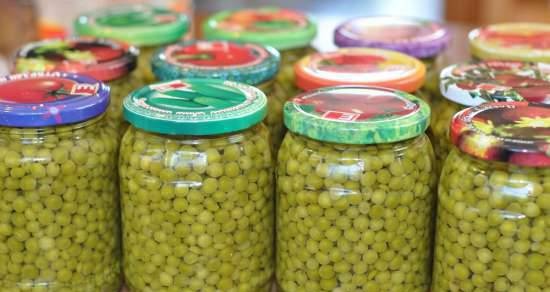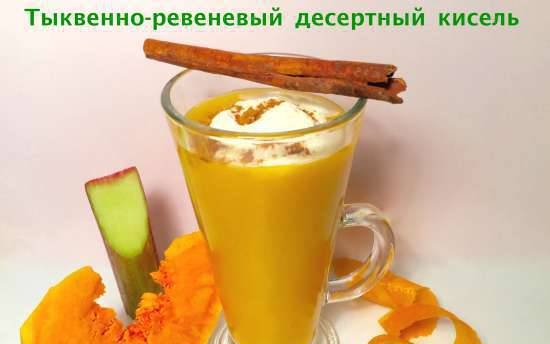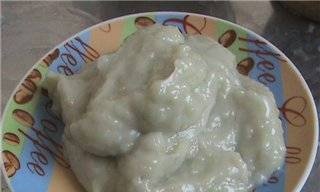|
 A rare housewife will be able to accurately calculate her time if she undertakes to cook peas. When will it cook? In an hour? For two? Sometimes he is stubborn and does not lend itself to cooking at all. A rare housewife will be able to accurately calculate her time if she undertakes to cook peas. When will it cook? In an hour? For two? Sometimes he is stubborn and does not lend itself to cooking at all.
True, the compilers of books on delicious food warn: before cooking, soak for two or three hours. They wet. Sometimes it helps. In other cases, no. Then the hostess begins to wet longer. Day. Two...
But the effect is the opposite: the longer, the worse. Then no matter how much you cook, it will remain as hard as wood.
Experts advised to remove the peel. Leave bare cotyledons. Two halves. Two hemispheres. They referred to the experience with gleditsia. Gleditsia is also a leguminous plant, like peas. In previous years, peas were thrown onto the silk sieves of mills so that they would knock out flour dust from there. They shook and bounced on the sieves and rubbed against each other for a whole year. And during this period, their chocolate-lacquered peel almost did not wear out. To germinate the peas, it was necessary to saw off the peel with a file, or scald it with boiling water.
The peas also have a tough skin. From the fact that it was removed, he did not begin to boil down better. Then they suspected: because, probably, it is not cooked, because it lay for a long time. Was it stored in a warehouse? Earlier, the monasteries had long-term grain reserves: wheat, rye, buckwheat.
Of all the reserves, the monks did not store only oats and peas. The oats are rancid due to the fat. The peas were losing their ability to boil.
However, not only stale, but also fresh peas often exhibit exceptional persistence in a saucepan. A. Sosnin, a young employee of the Timiryazev Academy in Moscow, decided to check everything that could affect the stubbornness of a plant: shape, color, thickness of the peel, composition of elements. I started with the form. And he was immediately lucky. The digestibility turned out to be very closely related to the form. The spherical grains usually melted into mashed potatoes after a little over an hour, although there were some "stubborn" ones here too. But the wrinkled seeds, which resembled a crumpled, expired soccer ball, did not succumb to the fierce pressure of boiling water.
In their shape, they still resembled brains, for which they were popularly christened a brain variety.
The first success, however, did not turn the scientist's head, and he continued his search. Now he took up the thickness of the peel. Good luck again! The smallest number of peels were varieties with spherical, smooth seeds, which were eaten by people. Most of all - varieties of fodder peas pelushka. Pelushka and boiled down worse.
However, the observed connection was completely upset when the scientist used brain varieties for comparison. Those had little peel, and the digestibility was zero! Then he decided to understand the very essence of the brain. Why are they wrinkled? And why do they behave this way?
He cut open the fresh grain. Under the microscope, his cells looked like a heap of sacks piled on top of each other. Between them lay thick intercellular spacers. Seeds of smooth varieties had much thinner pads. So, it's all about the intercellular spaces. It is they who, shrinking, give the peas a wrinkled shape.
But what prevents them from dissolving during cooking as quickly as in smooth-grained, spherical forms? And why do the spherical have their own stubbornness, although their intercellular spaces are not very large? Sosnin could not answer these questions.
He took on the next task. For the coloring of the peas. Some experts believe that a lot depends on her. The scientist compared yellow with green and pink. This time, the result was disappointing. The stubborn ones were in all groups: among the yellow, and among the green. But the great thing is that in Finland only green seeds are recognized. It is believed that these are the ones that cook faster. And they probably don't think so for nothing.
Maybe the Finns have a different composition of elements in soils?
Even before Sosnin, they knew that if there is a lot of phosphorus in the soil, the peas will cook quickly.If there is an excess of potassium and nitrogen, everything will turn out to be the opposite.
Much also depends on the variety. Agronomists still remember the Swedish variety Capital, which was recently grown in our country all over the country. Capital grown in any area and on any soil was boiled down always and everywhere perfectly. And it was delicious. However, he had one very important defect: he did not react in any way to fertilizers. Whether it is a rash or not a rash, there is one harvest. What is the matter here is also not clear yet.
So, you still have to tinker a lot with peas. Take for example this question: how to protect crops from birds? An expert in gardening, Professor N. Kichunov could not find a single way of saving even from chickens. He stated that trying to outsmart the chickens was a futile task. They will find crops anyway. The only thing that can be offered is to sow in the evening, when it gets dark and the chickens go to bed. But how to sow in the dark, he did not explain. Another expert, F. Bömir, in his book "600 Tips for a Vegetable Grower" recommends protecting peas from pigeons with the help of ... old curtains, covering crops with them. In India, the birds are so pressing that the peasants stopped sowing fruitful white-seeded varieties and breed low-yielding red-seeded ones, which the birds do not peck out.
But perhaps the most difficult of the pea problems is getting green peas. This gourmet product is not only pleasant and melts in your mouth. It is also rich in vitamin C. And most importantly, it contains inositol and choline, the very proteins that protect our body from malignant tumors.
Both cerebral and non-cerebral varieties are suitable for green peas, if only they are removed in time.
Deadlines are tight to the extreme. You need to guess exactly when the product is ripe. You can't be wrong for a day. Gape a little, missed the day, as instead of sugar it forms starch, the peas will stiffen and will no longer be so tender.
But even if he didn’t miss this one day, if he cut the peas and left them in the field until morning, then by morning there would be less sugar and vitamins. If everything is done correctly, the peas are threshed, then there is still another danger.
The question arises: how to transport to the plant? Very convenient in the water tank. Peas will not wrinkle in water, will not break. But on the other hand, while he is being taken to the factory, the water will wash the sugar out of it. Better to carry in boxes. Although the color will not be so juicy. The buyer also needs a bright, fresh color. In previous years, you could do everything to preserve the color!
The best product in Russia was born in the village of Porechye-Rybnoye, Yaroslavl province.
But even here there were dishonest people. If they did not know how to guess the only day when the treasure needed to be cleaned and processed, and it lost its natural color, then they ran to the garden, tore the nettles from under the fence and boiled peas with it, which made it look young and beautiful again.
Of course, maybe there was no big trouble from such painting for the buyer, because nettle is an edible plant. But others did worse. Various chemicals were added, even all kinds of poisonous copper salts.
The years go by. The views of agronomists are changing. Fashion is changing. It used to be fashionable to grow high varieties of peas. Sometimes up to three meters. One was even called the Telegraph. Now it's the other way around. Tall ones lie down, so they try to hatch lower in stature. The Dutch are so successful in this that their varieties barely rise above the ground. The Germans are ironic: in these fields there is more convenience for weeds than for peas.
Indeed, there is a lot of light, no shadow. The weeds are falling down. You have to use herbicides, and that also costs money. The Germans themselves comply with the measure and do not use such undersized varieties.
However, in other matters concerning peas, the Germans sometimes did not know the measures. On this occasion, one can recall one case from the times of the Franco-Prussian war of 1870-1871.
In the German army, it became tight with meat and other proteins. The quartermasters then invented a method of making sausage from peas. The benefit of this culture in Germany has always been sown a lot. They took pea flour, boiled it, added bacon, onion and spices. And in order not to sour, they filled up the mass with brown. Chemist A.Meinert calculated that the soldiers will fully satisfy the need for protein food if they eat three kilograms of sausage with breadcrumbs daily.
In practice, however, it turned out differently. As soon as the soldiers approached the planned norm, they began to have intestinal problems, and soon the poor things completely lost their appetite. Too much peas are bad too, despite all of their essential amino acids.
The sad outcome did not confuse, however, their opponents - the French. They learned about the German innovation, and soon the French army was also armed pea sausage.
A. Smirnov. Tops and roots
 |
Swordfish with olive sauce and aromatic rice with green peas |
 |
Vegan stew with vegetables, green peas, paneer cheese, coconut cream |
 |
Chicken soufflé with green peas and chanterelles in bacon |
 |
Russian green pea puree soup |
 |
Duet Mint-basil ice cream with green peas and Adyghe cheese, Whole grain flatbreads with green onions |
 |
Rice with green peas and almonds |
 |
Reverse pasta with green peas and seafood |
 |
Chicken liver with rice and green peas "Liver in peas" in a multicooker Brand 37501 |
 |
Jamie Oliver Pea Purée |
 |
Slow-cooked pea soup without salt |
 |
Pizza with green peas, prosciutto and basil vinaigrette |
 |
Creamy green pea soup |
 |
Fish terrine with green peas |
 |
Risotto with chicken liver and green peas in a slow cooker Mulinex Cook4Me |
 |
Pasta with green peas and brisket (Pasta piselli con pancetta e panna) in the Steba DD2 multicooker |
 |
Fish zrazy with green peas |
 |
Avocado dip with green peas and herbs |
 |
Chicken stew with leeks and green peas |
 |
Pie with broccoli, bell peppers and green peas (multicooker Toshiba RS-18NMFR) |
 |
Salmon soup with green peas in chicken broth |
 |
Leeks with green peas |
 |
Chicken soup with spelled and green peas in a multicooker Redmond RMC-01 |
 |
Soup-puree from green peas Saint Germain - Potage Puree St. Germain (Vitek VT-2620 soup blender) |
 |
Rice with green peas and chicken, simmered in the oven |
 |
Green peas, canned in an autoclave or any pressure cooker |
 |
Green peas fried with mushrooms |
 |
Potato casserole in garlic sauce, with green peas and tomatoes, in a Princess pizza maker |
 |
Green pea puree soup (Dobrynya soupovar) |
 |
Soup with green peas and chicken |
 |
Peking cabbage side dish with green peas |
 |
Rice porridge with mushrooms and green peas (multicooker Redmond RMC-01) |
 |
Cold soup with green peas |
 |
Potato spaghetti with green peas and pesto sauce |
 |
Soup with porcini mushrooms and green peas |
 |
Buckwheat casserole with chicken and green peas in oursson MP4002 pressure cooker |
 |
Okroshka with smoked sausage and green peas |
 |
Chicken fillet with carrots and green peas in a slow cooker Moulinex Minute Cook |
 |
Meat casserole with green peas and broccoli in the Philips Airfryer |
 |
Cold soup with fresh peas and green asparagus with red fish |
 |
Radish baked with green pea pods |
 |
Rice with meat, pumpkin and green peas, stewed in a pot |
|
 A rare housewife will be able to accurately calculate her time if she undertakes to cook peas. When will it cook? In an hour? For two? Sometimes he is stubborn and does not lend itself to cooking at all.
A rare housewife will be able to accurately calculate her time if she undertakes to cook peas. When will it cook? In an hour? For two? Sometimes he is stubborn and does not lend itself to cooking at all.















































